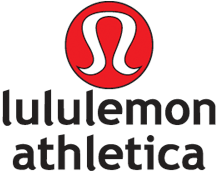I really enjoyed assignment 3. I will even go so far as to say that this assignment was my favourite project so far in my university career. The reason this assignment stood out amongst all the other assignments I have done so far in university is because it allowed me to showcase my knowledge of marketing, and allowed me to flex my creative muscle. It was absolutely awesome brainstorming ideas for the video. I wanted so badly to create something that was not a presentation for a change, and the flexibility of this assignment allowed my creativity to run wild. I remember becoming immersed in the creation of the script and brainstorming ideas to make our video funny and informative at the same time.

Each person was responsible for the composition of a scene based on one of the 4Ps of Lululemon. After that was all done, I was more than happy to compile everything. Having done some scriptwriting as a high school student, it was extremely fun to make everything flow, make sure all required information was present, and insert a few jokes here and there just for kicks. The video editing process was enjoyable too. Though my team member Mark did most of it, it was enjoyable for us as a team to watch him do it on a screen in one of the CLC meeting rooms, suggest ideas to improve the video, and learn some technical skills as well. Now every time I watch our final product, I remember all the hard work and enjoyment associated with it. I’m pretty proud of what our group pulled off.
Our team was extremely cohesive throughout the whole process. Everyone put their best foot forward and contributed generally equally in the different areas we each excelled in. Filming went smoothly, and it was an extremely enjoyable process. I have heard that some other groups had some trouble with this project since they may have lacked scriptwriting/filming experience. Maybe I was just lucky that all members of our group shared the same vision! I just wish we had a minute or two more to allow us to include more of our jokes!
 Though Canada Goose had existed for years in Canada, It has only recently gathered steam in the Canadian market. However, the company seemed to have had a strong foothold in the international market for a long time. Its quite amazing to compare two products that are similarly branded by the “Canadian” brand have two completely different brand images and target markets. In my opinion, those who wear Canada Goose in Vancouver are just showing off their affluence. If you’re living in Vancouver you don’t need a full blown fur trimmed parka. You should instead be investing your funds in a more practical article: a nice umbrella.
Though Canada Goose had existed for years in Canada, It has only recently gathered steam in the Canadian market. However, the company seemed to have had a strong foothold in the international market for a long time. Its quite amazing to compare two products that are similarly branded by the “Canadian” brand have two completely different brand images and target markets. In my opinion, those who wear Canada Goose in Vancouver are just showing off their affluence. If you’re living in Vancouver you don’t need a full blown fur trimmed parka. You should instead be investing your funds in a more practical article: a nice umbrella. By advertising the idea of “huge savings” to consumers, it creates interest, then desire, and finally action in the form of huge lines to get into stores to nab “dirt cheap” merchandise. In truth, close to no retailers actually offer real savings. Capitalizing on the success of Black Friday is a new addition called Cyber Monday, when high-tech and computer stores offer “huge savings” on their products as well.
By advertising the idea of “huge savings” to consumers, it creates interest, then desire, and finally action in the form of huge lines to get into stores to nab “dirt cheap” merchandise. In truth, close to no retailers actually offer real savings. Capitalizing on the success of Black Friday is a new addition called Cyber Monday, when high-tech and computer stores offer “huge savings” on their products as well.


 I found this especially prominent when toy companies market to kids. I vividly recall seeing a commercial for Lego “Bionicles”. The advertisements depicted the powerful “Bionicle” toys fighting immense monsters with awesome weapons. The advertisement would run every time there was a commercial break (approximately one third of a supposed 30 minute TV show was devoted to advertisements) which peeved me quite a bit. After seeing that “Bionicle” commercial in midst of my regular Saturday morning cartoons the ten year old me begged my parents to let me buy a “Bionicle”.
I found this especially prominent when toy companies market to kids. I vividly recall seeing a commercial for Lego “Bionicles”. The advertisements depicted the powerful “Bionicle” toys fighting immense monsters with awesome weapons. The advertisement would run every time there was a commercial break (approximately one third of a supposed 30 minute TV show was devoted to advertisements) which peeved me quite a bit. After seeing that “Bionicle” commercial in midst of my regular Saturday morning cartoons the ten year old me begged my parents to let me buy a “Bionicle”.